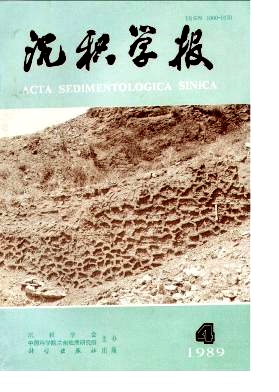LITHOFACIES PALEOGEO GRAPHY OF NORTH CHINA PLATFORM IN LATE PALEOZOIC
- Received Date: 1987-07-09
- Publish Date: 1989-12-10
Abstract: North China Platform is located, between the two latitude structural belts of Tianshan-Yinshan mountains and Kunlun-Qingling mountains with the total area of about one million square kilometres.The platform is a large polycyclic Cratonic coal-bearing basin which gradually evolved and formed on the base of stable crust during Late Paleozoic. The thickness of the sedimentary rocks deposited from the Middle and the Late Proterzoic to Ccnozoic in Narth China Platform is over ten thousnad metres.It is an important region for oil and gas exploration in the East part of China. The platform base was composed of Archaeozoic and Late Proterozoic. The Early Paleozoic sediments were carbonate rocks of shallow- sea platform facies.The Caledonian Movement made the platform uplift as a land in the Middle Ordovician and Late Ordovician and Early Carboniferous Systems were missing. The sediments from Late Carboniferous to Late Permian were a set of fluvial-lake - delta-shore sedimentary system of clastic rocks intercalated with carbonate rocks and coal beds .The total thickness is 320-1666m. During the Early period of Late Carboniferous the transgression ( the Jingyuan formation) of North China Platform came from the west of Qilian Sea, the sediments were only distributed in local areas if west margin of the platform, which could be contrasted with Namuyian of Europe in age, during the middle period of Late Carboniferous, the transgression (the Bengxi formation) was from west Qilian Sea and east ancient Yangzi, Sea, the paleogeographic units were dominated by sea gulf, lake front platform, tidle flat and coastal swamp, the age of them could be contrasted with Westphalina of Europe, during the Late Carboniferous (the Taiyuan formation) the transgression increased, the north part of the platform was dominated by delta sediments, the central and south parts of the platform' were dominated by coastal sediments, who's age could be contrasted to Stephanian of Europe.Dur-ing the early Permian (the Sanxi formation) , the sea water began to regress towards east and west, the central part of the platform was wholly occupied by delta sediments.The three typics of peat bogs were almost distributed over the shole area, the age of which could be contrastrasted to European Autunian; during the late period of the Early Permian ( the Xiashinezi Formation) , coastal sediments was ended, the delta deposits were only limited in the southern area of 36° northern latitude and the east part of 111° eastern longitude.Inland fresh water lake were formed in the west part of this area.The north and central parts of the platform were fluvial sedimentary areas, the age could be contrasted with Saxonian of Europe. The sedimentary envioronment and paleogeographic unit distribution in the late period of Early Permian were almost the same as compared to that of the lower Shihezi period, its age could be contrasted with early Zechstein of Europe; during the late period of Early Permian ( the Shiqianfeng Formation) , the sedimentary facies was dominated by continental sedments, the delta sedments were basically vanished.The south of the platform was dominantly shallow-water lacustrine deposits, and the north and central parts were occupied by the fluvial and small type of lacustrine deposits: the age of them could be contrasted with late Zechstein of Europe. As stated above, the sediments from Late Paleozoic era in North China Platform were a set of marine-terrestrial transition facies. With the evolution of geologic history and the alteration of paleogeographic environment, the swamp deposits from older to new changed from north to south.
| Citation: | Tang Kai Jiang. LITHOFACIES PALEOGEO GRAPHY OF NORTH CHINA PLATFORM IN LATE PALEOZOIC[J]. Acta Sedimentologica Sinica, 1989, 7(4): 97-104. |






 DownLoad:
DownLoad: